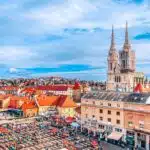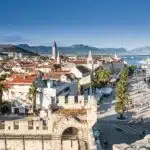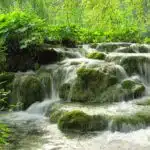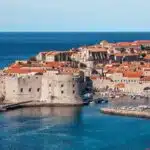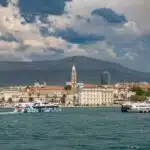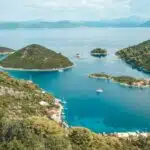Rovinj, a picturesque coastal town on Croatia’s Istrian Peninsula, is one of the country’s most beloved destinations. Known for its charming old town, narrow cobbled streets, colorful buildings, and stunning views of the Adriatic Sea, Rovinj is a blend of history, culture, and natural beauty. Once an island, it was connected to the mainland in the 18th century and has since developed into a cultural hub with a rich heritage influenced by Venetian, Roman, and Slavic cultures. Whether you’re wandering through its historic streets, enjoying its stunning coastline, or tasting its delicious seafood, Rovinj offers a truly magical experience.
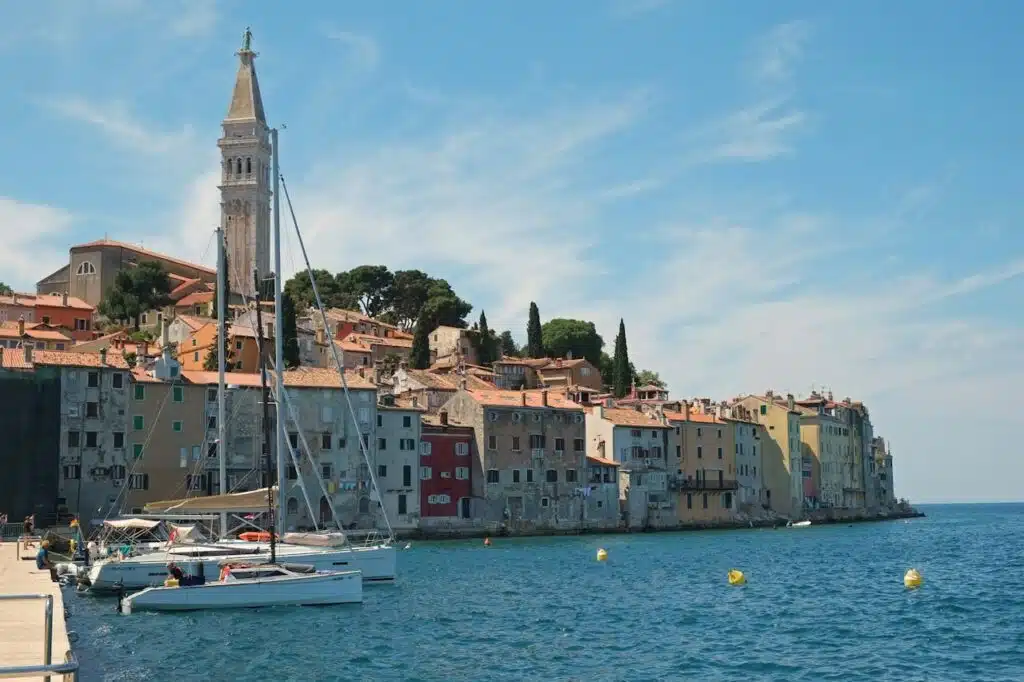
Exploring the Old Town
Rovinj’s Old Town is the heart and soul of the city. Perched on a small peninsula, its labyrinth of narrow, winding streets is best explored on foot. The town’s Venetian heritage is evident in its architecture, with vibrant buildings lining the waterfront and small alleyways filled with quaint cafes, artisan shops, and galleries.
- St. Euphemia’s Church: The town’s most iconic landmark, St. Euphemia’s Church, towers over Rovinj from the highest point of the peninsula. Built in the 18th century, this Baroque-style church is dedicated to the town’s patron saint, and its bell tower, modeled after Venice’s St. Mark’s Campanile, offers panoramic views of Rovinj and the surrounding islands.
- Balbi’s Arch: A symbol of the town’s Venetian past, Balbi’s Arch marks the entrance to the Old Town. Once the main town gate, it dates back to the 17th century and showcases beautiful stone carvings.
- Grisia Street: This charming street is famous for its art galleries and workshops. Each August, Grisia hosts an open-air art festival, turning the street into a vibrant showcase of local talent.
As you stroll through the Old Town, you’ll come across picturesque squares, beautiful views of the sea, and plenty of opportunities to experience Rovinj’s laid-back atmosphere.
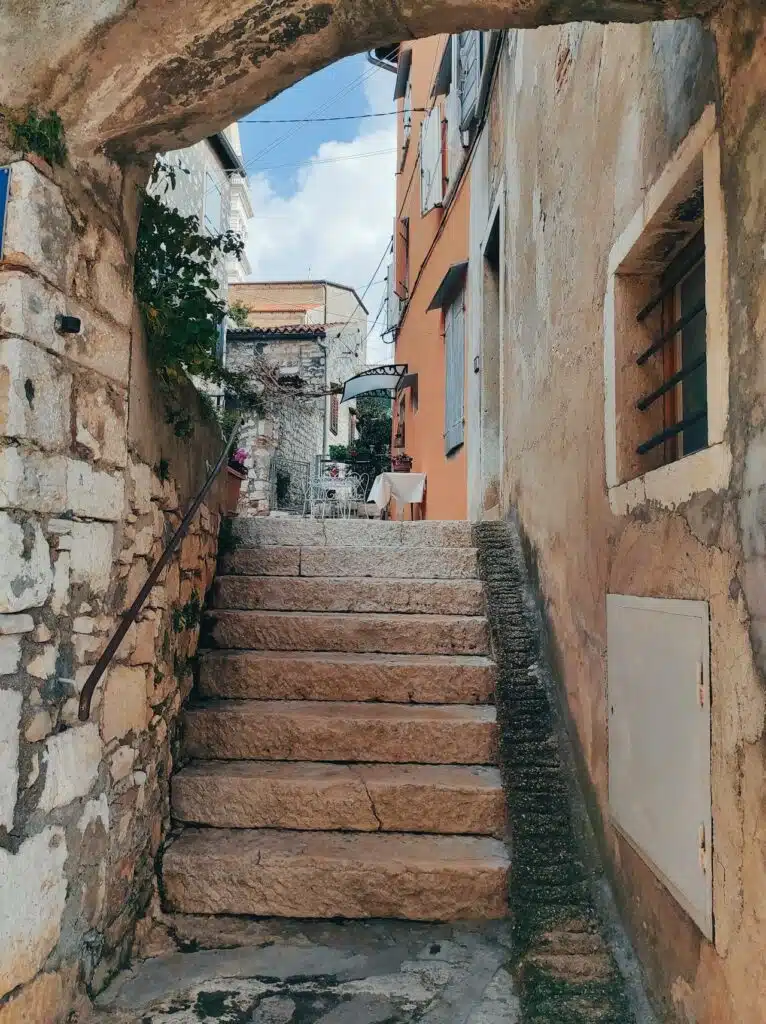
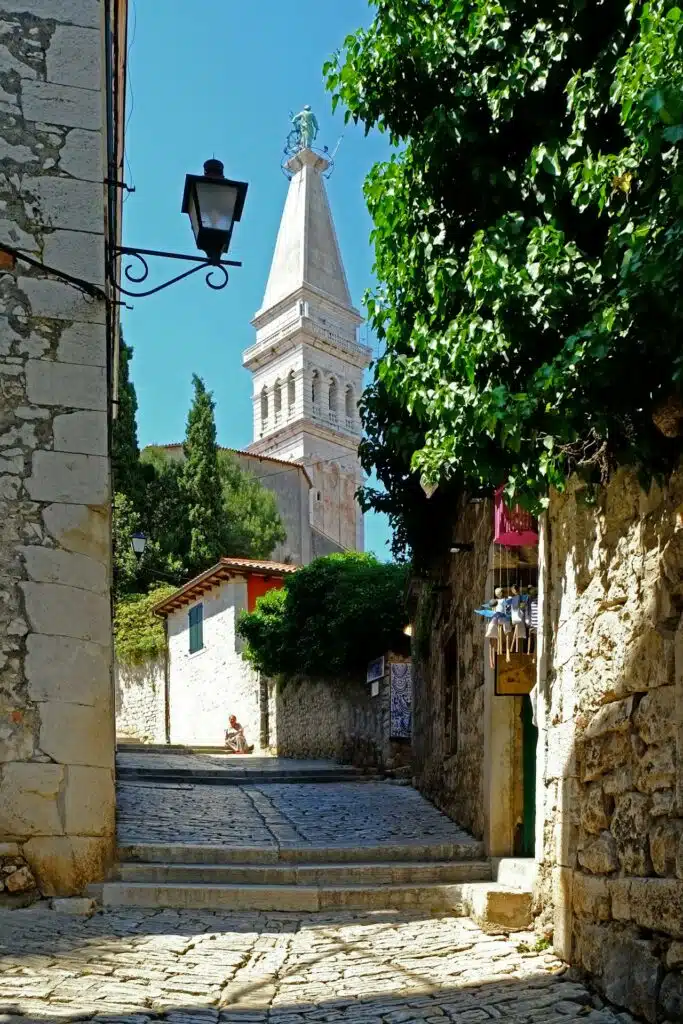
Rovinj’s Stunning Coastline
One of Rovinj’s greatest attractions is its stunning coastline and crystal-clear waters. The town is surrounded by numerous coves and beaches, perfect for swimming, sunbathing, or simply relaxing by the sea.
- Punta Corrente Forest Park (Golden Cape): This natural park, located just outside the Old Town, is a beautiful spot for walking, cycling, and swimming. The park is home to several secluded beaches, shady pine forests, and scenic paths that offer breathtaking views of the Adriatic.
- Lone Bay: One of the most popular beaches in Rovinj, Lone Bay is located within Punta Corrente Forest Park. Its calm waters and beautiful surroundings make it a favorite spot for both locals and tourists.
- St. Andrew’s Island (Crveni Otok): Just a short boat ride from Rovinj, St. Andrew’s Island offers pristine beaches, walking paths, and a peaceful retreat from the town’s hustle and bustle.
For those looking to explore further, a boat tour of the Rovinj Archipelago is a great way to see the surrounding islands and hidden coves.
A Taste of Istria: Rovinj’s Culinary Delights
Rovinj is not only a feast for the eyes but also for the palate. The town is part of the Istrian region, known for its exceptional cuisine, which blends Mediterranean and Central European influences. Rovinj’s restaurants serve up fresh seafood, local truffles, olive oil, and Istrian wine, making it a culinary paradise for food lovers.
- Fresh Seafood: Being a coastal town, Rovinj’s restaurants specialize in fresh seafood, with dishes like grilled fish, squid, and shrimp often on the menu. The local specialty, brodetto (fish stew), is a must-try.
- Truffles: Istria is famous for its truffles, and many restaurants in Rovinj incorporate this prized ingredient into their dishes, from pasta and risottos to meats and cheeses.
- Istrian Olive Oil and Wine: No meal in Rovinj is complete without tasting the region’s renowned olive oil and Malvazija wine. Many local taverns and restaurants offer olive oil tastings, allowing visitors to sample some of the best oils in Croatia.
For a truly authentic experience, visit Rovinj’s green market near the harbor, where local farmers sell fresh produce, cheeses, olive oils, and other Istrian specialties.
Art and Culture in Rovinj
Rovinj has a thriving arts scene, with its narrow streets and historic buildings serving as inspiration for many local artists. The town is home to numerous galleries, workshops, and cultural events throughout the year, making it a haven for art lovers.
- Grisia Art Street: As mentioned earlier, Grisia Street is the epicenter of Rovinj’s art scene. The street is lined with galleries and studios where local artists display their work. Each August, the annual Grisia Art Festival turns the street into an open-air gallery, attracting artists and visitors from all over the region.
- Batana Eco-Museum: This unique museum is dedicated to the batana, a traditional wooden fishing boat that has been used in Rovinj for centuries. The museum explores the town’s fishing heritage and offers boat tours in traditional batanas during the summer months.
Best Time to Visit Rovinj
The best time to visit Rovinj is during the spring (April to June) and early autumn (September to October) when the weather is warm but not too hot, and the town is less crowded. These months offer the perfect opportunity to enjoy Rovinj’s outdoor activities, beaches, and cultural events. Summer (July and August) is the peak tourist season, with warm temperatures and bustling streets, while winter offers a quieter, more peaceful experience of the town.
Rovinj is a perfect destination for travelers looking to experience the beauty of Croatia’s Adriatic coast, rich cultural history, and delicious cuisine. Whether you’re exploring the charming Old Town, relaxing by the sea, or savoring the local flavors, Rovinj offers a unique and unforgettable travel experience. Its combination of Venetian charm, artistic soul, and stunning landscapes makes it one of Croatia’s most enchanting towns, inviting visitors to return time and again.


